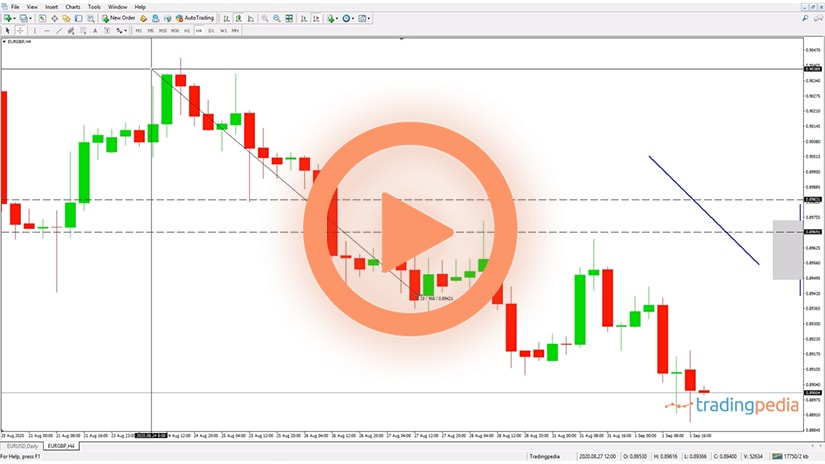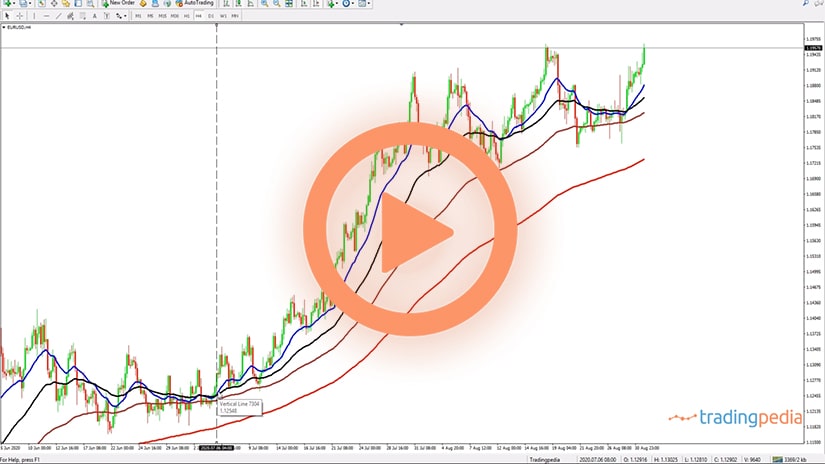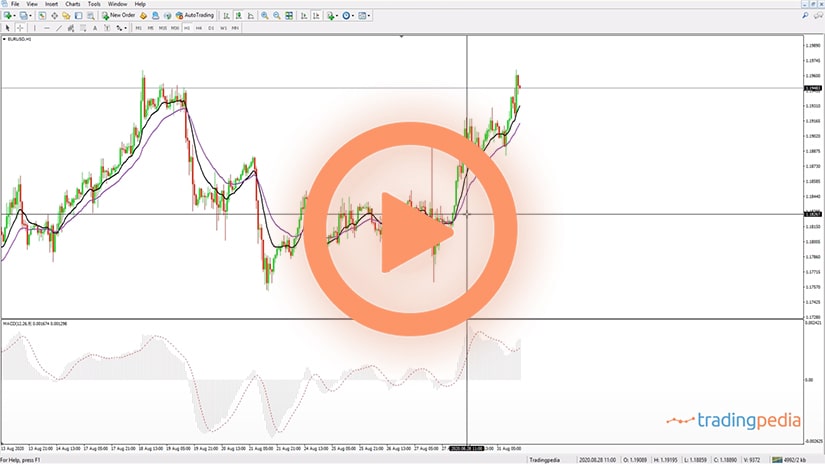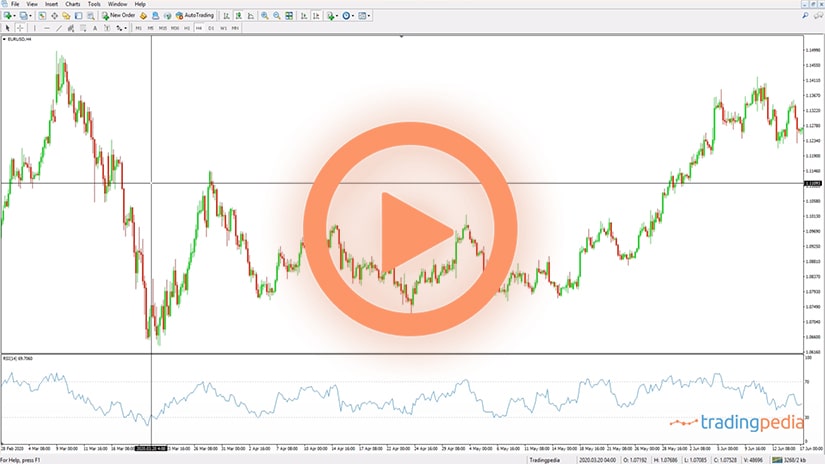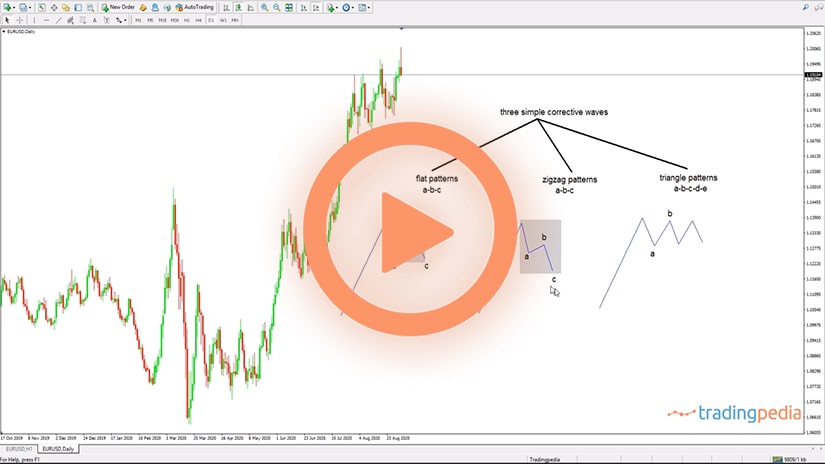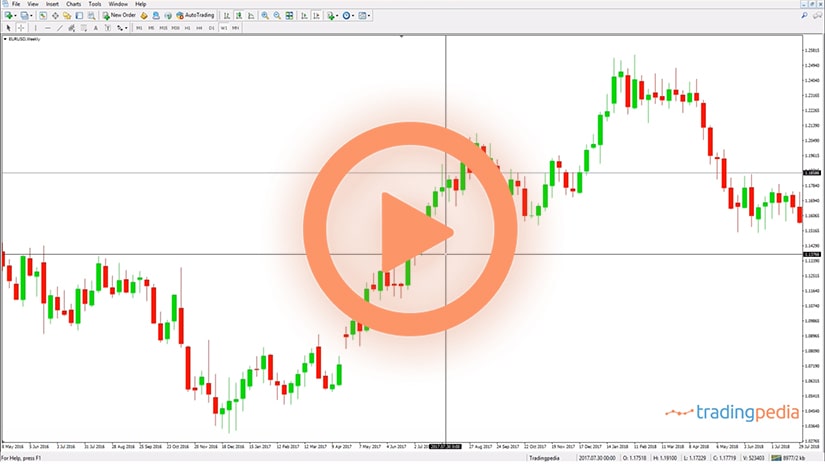
Hello there, this is tradingpedia.com and this video deals with the concept double and triple combinations with the Elliott Waves Theory. It continues what we discussed in the previous video – this being an example of a simple correction, this one of a double combination. It is formed out of a zigzag, a triangle and the x-wave acts as a connecting part.
A double combination is the next common pattern when it comes to complex corrections with a small x-wave. Another option would be a complex correction with a small x-wave that has three simple corrections on its structure. That is called a triple combination.
Triple Combination
A triple combination looks like this. Imagine a move to the upside – for example, the a-wave of a triangle. And then the market forms a triple combination in the sense that it forms the first corrective wave – a-b-c, a flat. The x-wave follows, but fails to rectrace the c-wave in less than the time it took to form and goes like this, a corrective structure that does not retrace more than 61.8% of this a-b-c.
Next, the market forms another simple correction which cannot be a triangle – but it can be either a zigzag or a flat. For a flat pattern, it may be a-b-c. At this point in time, we may say that this might be a double flat pattern. That might be the case, but if the market does not break out of this channel, another x-wave follows, and must respect the same rules. Namely, it should not retrace more than 61.8% of the first a-b-c.
Any triple combination ends with a triangle. In fact, most double combinations end with a triangle as well – a-b-c-d-e. As you can see, the Elliott Waves Theory, while starts with simple concepts, it gets more complex by the time various concepts appear, and suddenly it is very easy to get lost on different waves of various degrees.
For this reason, examples are very important. For now, make sure you understand that in a double or triple combination the x-wave cannot retrace more than 61.8% of the previous correction.
Almost always double combinations end with a triangle. But you can have a double combination that starts with a zigzag and ends with a flat. Or starts with a flat and ends with a zigzag, and so on.
In a triple combination, there is always a triangle at the end of the triple combination. No complex correction with the Elliott Waves Theory starts with a triangle. So if you have a pattern, a complex correction that starts with a triangle, that is not correct.
Example of a Double Combination
Let’s look at an example of a double combination. This is the EURUSD and the drop from 1.20 something to here, ended with a triangle. But we cannot say that this is a triangle as a simple correction because we do not have a sustained move as the triangle should have acted as a continuation pattern. But here there is a bearish move, a triangle forms, and the market broke in the other direction. So the triangle forms at the end of something. When this happens, it is the end of a double or triple combination.
So we start at the highs and mark our levels. We see that this is a triangle as well and it is important to start the Elliott count from its end, and the market dropped and there is no pullback more than 61.8% of that drop. Hence, there is no flat pattern and the only option is to interpret this as a zigzag.
Therefore, we have an a-b-c and a triangle, and a huge market move in between. So the market formed two intervening x-wave or only one. If we put it like this and measure the entire a-b-c and check the 61.8%, we see that the x-wave is not even close to 61.8%. It means that this is a complex correction with a small x-wave.
Next, we need to find out what kind of a complex correction with a small x-wave is this? Well, it can only be either a double or a triple combination. Why? Because if it would be a double zigzag, another zigzag would follow here. But this is not impulsive activity, it is corrective. It is not a flat either because there is not any single retracement in this segment that retraces more than 61.8% of any segment. Well, if it is not a zigzag and not a flat, it can only be a triangle.
If the x-wave connects a triangle and a zigzag, that is a double combination. So the EURUSD from here to here formed a double combination.
Related Videos
Conclusion
This is the theoretical part and shows how a double combination looks in Elliott Waves books and this is reality.
Thank you for being here and have a great day.
